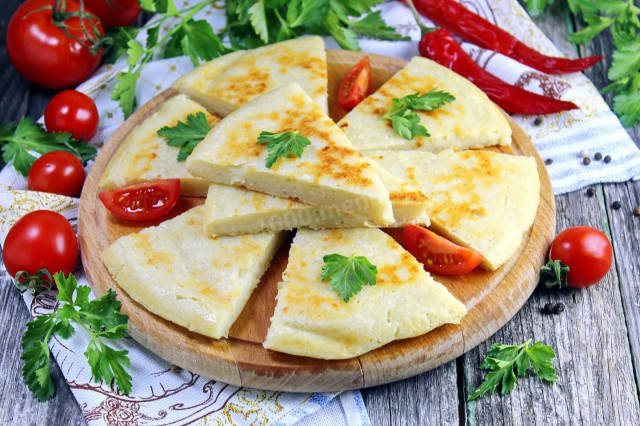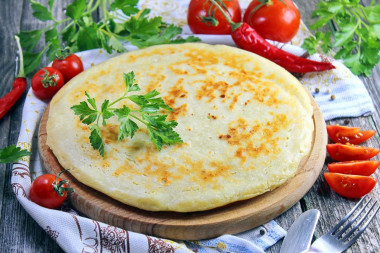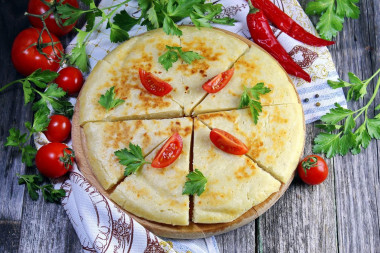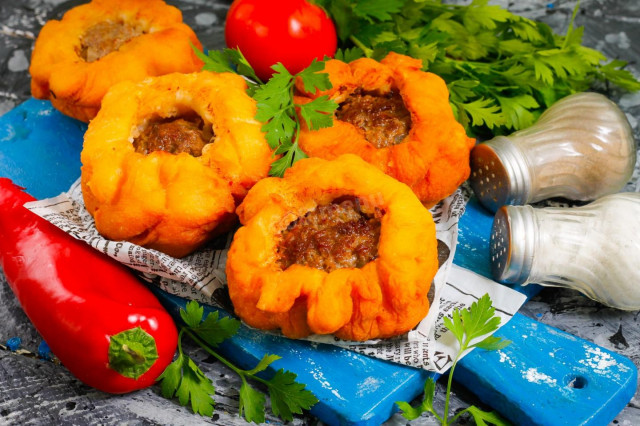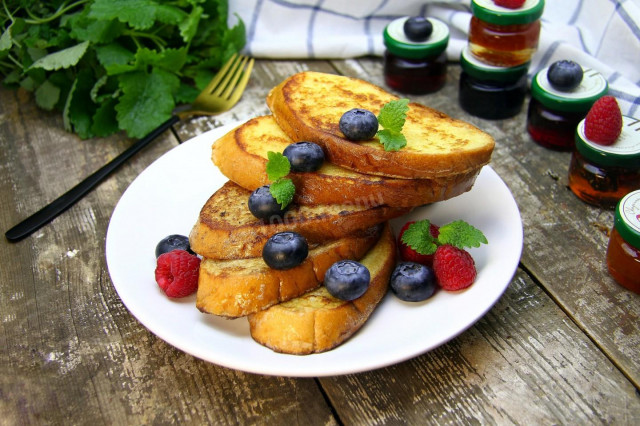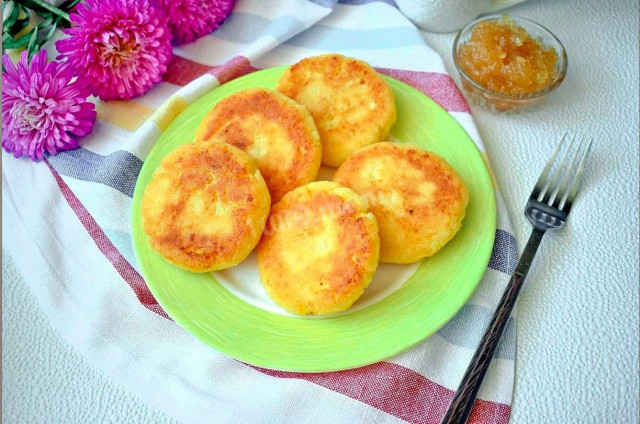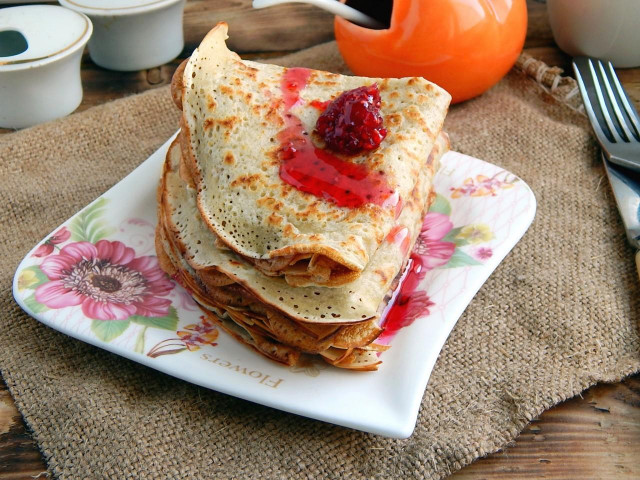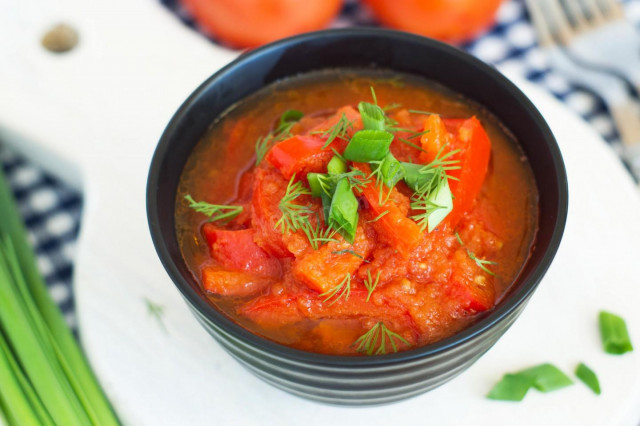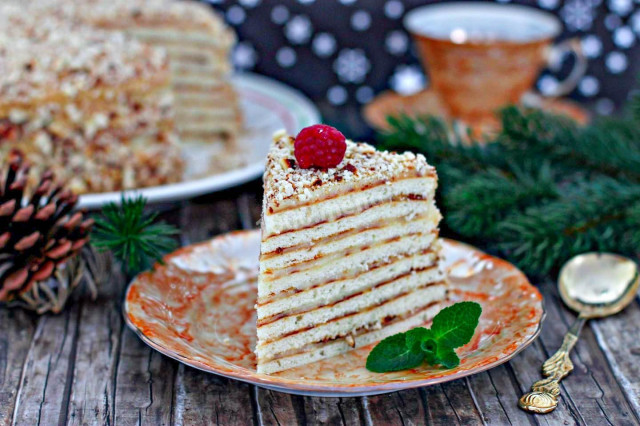Composition / ingredients
Step-by-step cooking
Step 1:
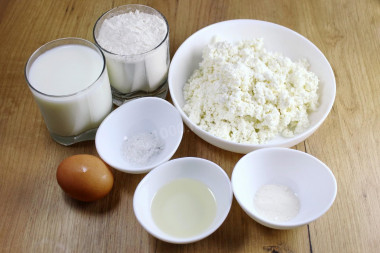
How to bake lazy khachapuri with cottage cheese in a frying pan? Prepare all the necessary ingredients. Take flour of the highest grade, egg - C1 or CO. Milk and cottage cheese are suitable for any fat content.
Step 2:
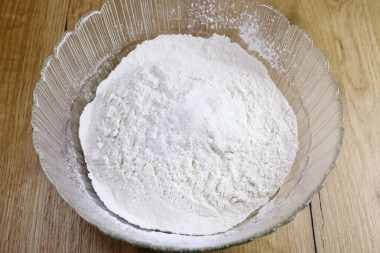
In a deep bowl, in which it will be convenient to mix the ingredients, sift most of the flour. Add baking powder and salt to it and mix so that they are evenly distributed over the flour. It is important to sift the flour to saturate it with oxygen. Then the baking will turn out to be airy and will rise well when baking.
Step 3:
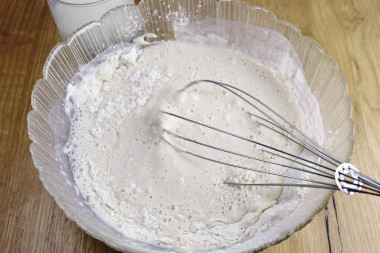
Pour the milk into the flour in small portions and mix so that no lumps form.
Step 4:
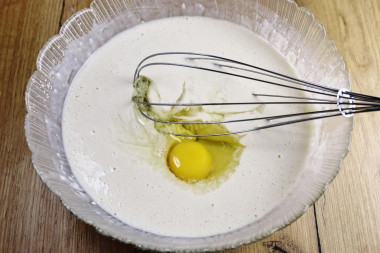
Wash the egg with soap. Break it into a dough and knead it thoroughly. Leave the dough for 10 minutes to disperse the gluten.
Step 5:
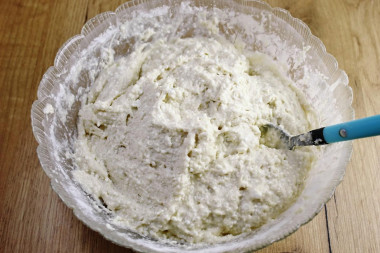
Then transfer the cottage cheese to the dough and mix well until smooth. The dough should have the consistency of thick sour cream. If necessary, add flour in small portions.
Step 6:
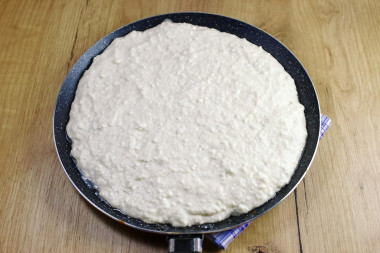
Take a frying pan, it is better if it is with a thick bottom so that the khachapuri is baked more evenly. Grease the bottom and sides of the frying pan with vegetable oil and heat over medium heat. Make the fire smaller and put the dough in the pan. Smooth the top with a spatula or spoon. Cover and bake until lightly browned. Lubricate the top with vegetable oil and turn it over to the other side using two spatulas or a plate.
Step 7:
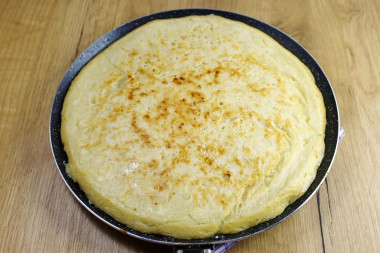
The way with a plate seems to me more convenient. First cover the pan with a plate, turn the pan upside down. Khachapuri will be on the plate. With a spatula, gently transfer it back to the pan. The exact baking time depends on the frying pan and the stove on which you will cook. Focus on the appearance of khachapuri.
Be prepared for the fact that flour may need more or less than indicated in the recipe. Focus not on the amount of flour, but on the desired consistency of the dough. To avoid mistakes, read about flour and its properties!
Use oil with a high smoking temperature for frying! Any oils are useful only until a certain temperature is reached - the point of smoking, at which the oil begins to burn and toxic substances, including carcinogens, are formed in it.
Unrefined oils, with rare exceptions, have a low smoking point. There are a lot of unfiltered organic particles in them, which quickly begin to burn.
Refined oils are more resistant to heating, and their smoking point is higher. If you are going to cook food in the oven, on a frying pan or grill, make sure that you use oil with a high smoking point. The most common of the oils with a high smoking point: refined varieties of sunflower, olive and grape.
If you don't want to add baking powder to the dough, you can replace it with soda. The proportions will be as follows: 1 teaspoon of baking powder = ½ teaspoon of soda + ¼ teaspoon of table vinegar. If the recipe specifies less / more baking powder than 1 tsp, the proportions of soda and vinegar will also be less / more than indicated, be careful.
Caloric content of the products possible in the composition of the dish
- Whole cow's milk - 68 kcal/100g
- Milk 3.5% fat content - 64 kcal/100g
- Milk 3.2% fat content - 60 kcal/100g
- Milk 1.5% fat content - 47 kcal/100g
- Concentrated milk 7.5% fat content - 140 kcal/100g
- Milk 2.5% fat content - 54 kcal/100g
- Cottage cheese of 40% fat content - 466 kcal/100g
- Cottage cheese of 20% fat content - 233 kcal/100g
- Cottage cheese of 18% fat content - 226 kcal/100g
- Cottage cheese of 10% fat content - 156 kcal/100g
- Low-fat cottage cheese - 75 kcal/100g
- Cottage cheese with sour cream - 260 kcal/100g
- Fruit cottage cheese - 147 kcal/100g
- Soft dietary cottage cheese - 170 kcal/100g
- Vitalinia cottage cheese - 64 kcal/100g
- Cottage cheese "morning" ( "danone") without sugar - 91 kcal/100g
- Cottage cheese - 156 kcal/100g
- Vegetable oil - 873 kcal/100g
- Salt - 0 kcal/100g
- Wheat flour - 325 kcal/100g
- Baking powder - 79 kcal/100g
- Chicken egg - 80 kcal/100g

